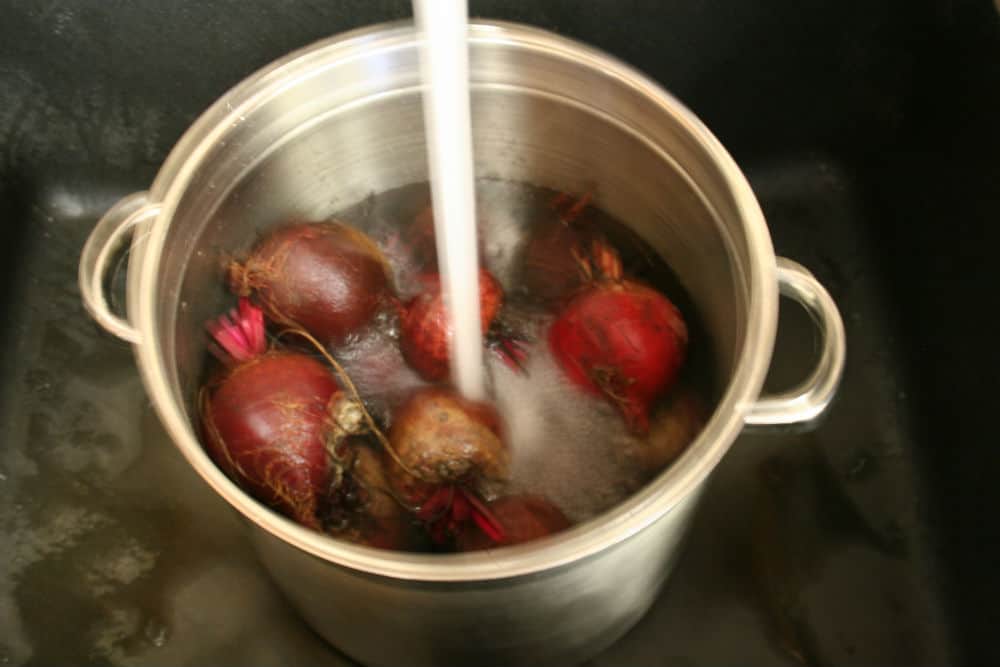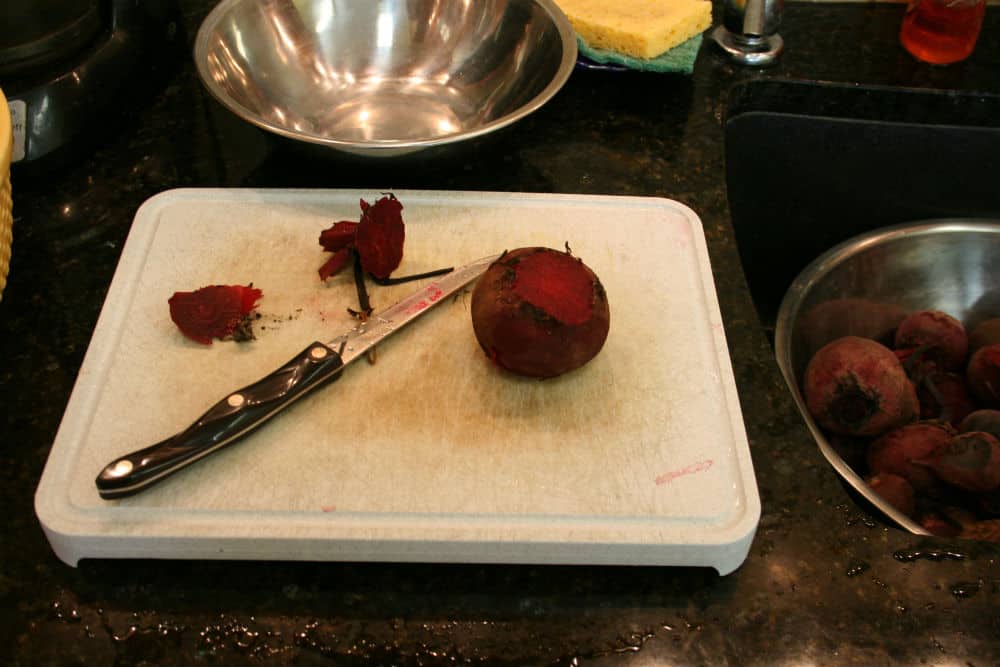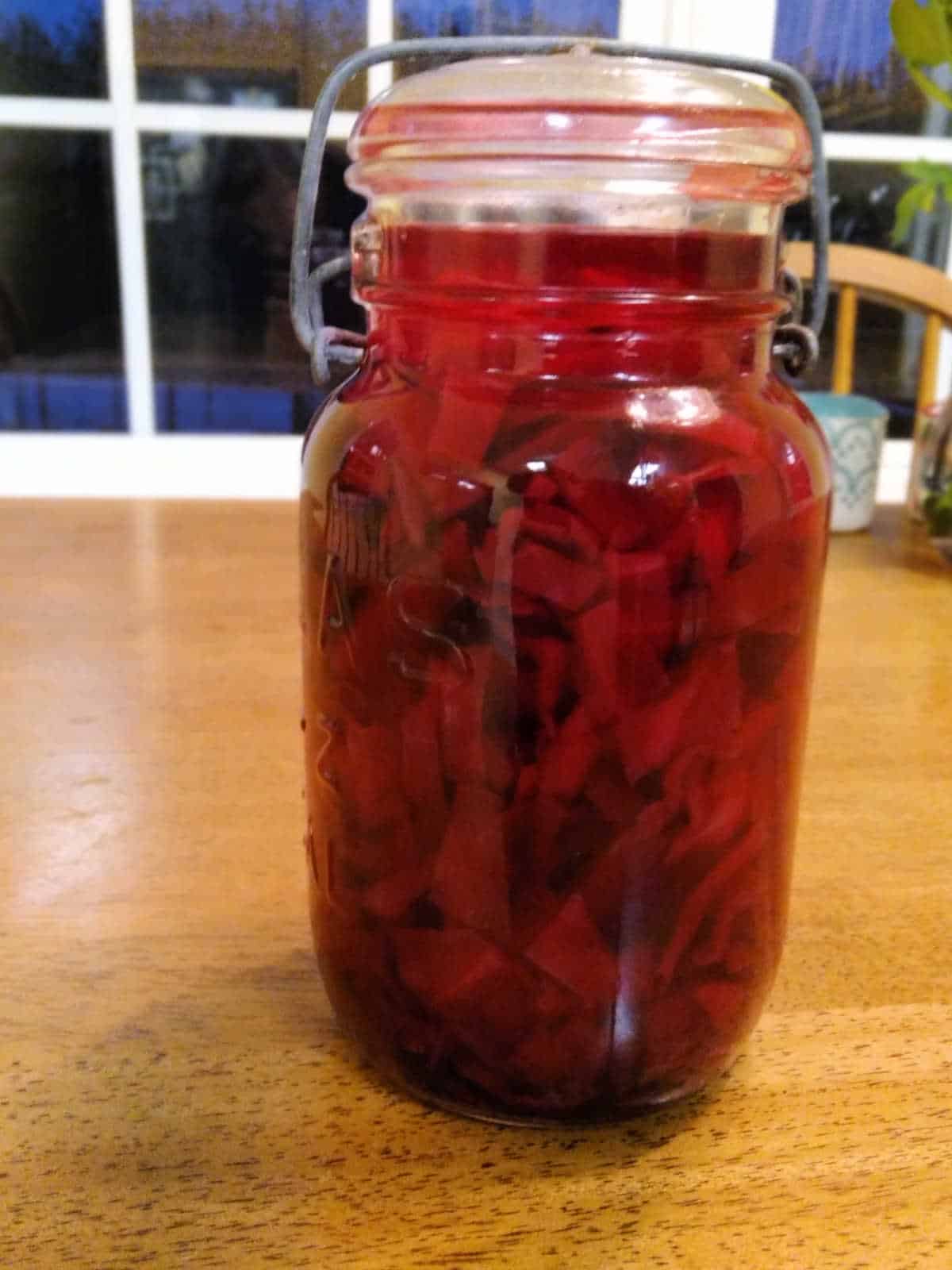This beet and cabbage soup recipe offers a feast for the senses. It’s healthy, tasty, and, yes, nutritarian (“Eat to Live”) friendly. Did I mention it’s also vegan? What more could you want in a soup?
Beet and Cabbage Soup Recipe
Jump to RecipeWe grew up with cans of Campbell’s soup in the cupboard and, later on, Progresso canned soup as a ‘luxury treat.’ Nothing compares as comfort food to a can of Campbell’s chicken noodle soup or, for me, chicken and stars. And there’s nothing as quick and easy as heating a can of soup on a busy day when you’re craving a hot meal but don’t have time to make it.
As nutritarians, though, we don’t eat salty foods anymore, and many cans of commercial soup pack a wallop of salt: something like 1,800 milligrams or more than we eat in an entire day!
The solution: make more soup from scratch.
Especially this beet and cabbage soup recipe.
Simple, Nourishing Beet and Cabbage Soup
Beets are easy to grow. I grow them each spring and can pickled beets, which we enjoy in salads all year long.
In the fall, I sow a second crop of beet seeds. These beets often mature by late fall, but I keep some in the ground during the winter and harvest them as needed.

How to Peel Beets
Never peel beets before cooking them. Peeling them before cooking makes the beautiful ruby-red and purple color wash right out. Cook them whole, in the skin, and peel them after cooking.
To cook beets, wash them thoroughly. Snip the stems off near the beetroot itself without nicking the surface. Clip off the long tap root as well.
Immerse the washed and trimmed beets in water and heat to boiling. Then, boil for approximately 40 minutes to 1 hour. The smaller the beet, the faster it will cook. I fork-test them to see if they are done. If the beet feels tender, it’s done.
Rinse the cooked beets in cool water and let them cool. With a sharp knife, trim off the top and bottom. Then, just use your fingers to slip the skins off. If the skins don’t slip off easily, a serrated knife can be used to scrape off the skins.

Precook the Beets
The secret to this soup is to precook the beets. Then, when you’re ready to assemble and cook the soup, they’re ready.
Note: The picture of my soup shows an old-fashioned canning jar. I do not use these jars for canning. I’m lucky to have a few boxes of them from my husband’s grandmother. I use these glass jars to store items like soup in the refrigerator. They aren’t considered safe anymore for food preservation, but they can be used for crafts and refrigerator or pantry storage jars. Refrigerate unused portions of this soup recipe to reheat and enjoy another time.
What to Serve with Beet and Cabbage Soup
The best side dish for beet and cabbage soup is a hearty bread, preferably the Fannie Farmer Water Bread and Rolls recipe. For dessert, try the Chocolate Peanut Cluster candy cookie (yes, it’s both!).

Beet and Cabbage Soup
Ingredients
Method
- Peel and dice the onion. Slice the cabbage.
- Place onion, sliced cabbage, and precooked peeled and sliced beets into the broth. Heat to boiling.
- Turn heat down to simmer. Cover the pot partially. Cook for 30-45 minutes until vegetable are tender.
- Before serving, stir 1 tablespoon cider vinegar into the soup. Dress each bowl with a small pinch of pepper and enjoy.




